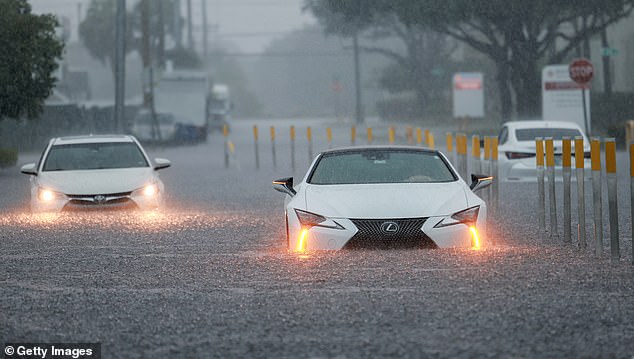South Florida has been inundated by a once-in-a-millennium downpour, causing massive flooding and causing travel difficulties.
Parts of the Sunshine State were drenched in up to ten inches of rain Tuesday, as more than a month’s worth of rain fell in a single night.
Miami and Fort Lauderdale were among the hardest hit, but many counties remain under flash flood watches.
Forecasters are still warning motorists to avoid I-75, where four inches of rain fell in a single hour Wednesday.
Flights were also disrupted, with more than 120 trips canceled or delayed due to record rain between midday Tuesday and this afternoon, according to Flight Aware.
South Florida has been inundated by a once-in-a-millennium downpour, causing massive flooding and causing travel difficulties. Pictured: Vehicles stopped on a flooded street on June 12, 2024 in Aventura, Florida.
Video on social media showed submerged vehicles struggling to cross flooded roads in Sarasota, while stalled vehicles were on soaked streets in Aventura.
There were similar scenes in Miami, where a strong storm system was seen hovering above the sky before the torrent fell.
“Significant rainfall has fallen in a short period of time, likely causing roads to be impassable in metropolitan portions of Miami-Dade County, specifically near downtown Miami and surrounding neighborhoods,” the National Weather Service wrote.
“Remember to never attempt to drive on flooded roads.”
The Tampa Bay area was hit by eight inches of rain in three hours, a weather event so rare that it is only expected once every 500 to 1,000 years.
Numerous roads were flooded and impassable for vehicles, including a section of the main artery Interstate 95 in Broward County.
The Florida Highway Patrol said southbound traffic was being detoured around the flooded section.
This closure will remain in place until further notice and water will be drained from the interstate. “Contractors are on the way to pump out the sewer system,” FHP said in an email.
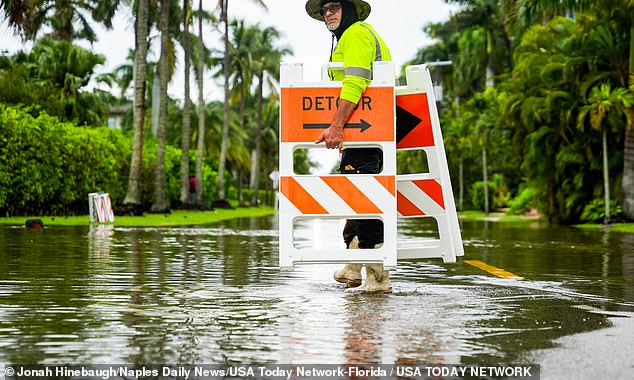
Miami and Fort Lauderdale were among the hardest hit, but many counties remain under flash flood watches.
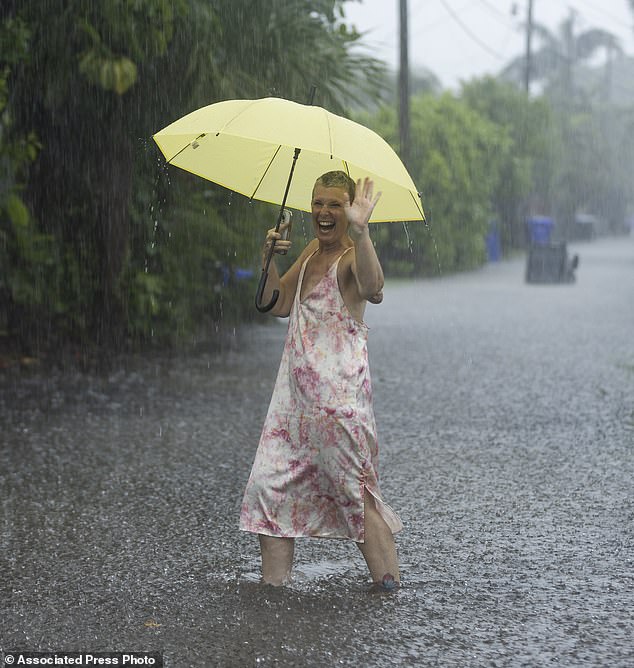
Laura Collinhofer holds an umbrella after moving her cars to higher ground as heavy rain falls over parts of South Florida on Wednesday, June 12, 2024, in Hollywood, Florida.
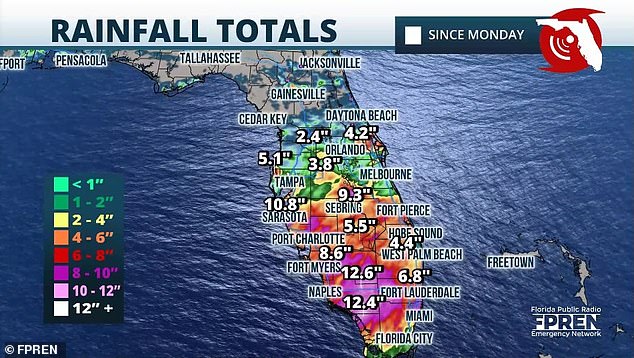
Forecasters warn motorists to avoid I-75 on Wednesday, where four inches of rain fell in a single hour.
Floridians are urged to use caution as there are no signs the rain will let up anytime soon.
“Rainfall of 1-3’/hour will continue across the already soggy regions of South Florida, producing additional localized totals of 5’+,” the National Weather Service wrote. “Isolated or scattered cases of flash flooding are likely.”
Downpours are expected to continue through Saturday, with the National Hurricane Center highlighting an area of low pressure over the eastern Gulf of Mexico.
The rain comes after large areas of Florida were left parched by spring droughts that are now exacerbating flooding.
Dry periods have left the soil hydrophobic, meaning it is less able to absorb excess moisture, especially in urban areas.
Sarasota, which has seen some of the worst flooding, has received 25 inches less rain than normal since the beginning of 2023, the driest on record.
The deluge comes amid forecasts of an unusually busy hurricane season.
The National Oceanic and Atmospheric Administration estimates there is an 85 percent chance that the Atlantic hurricane season will be above average.
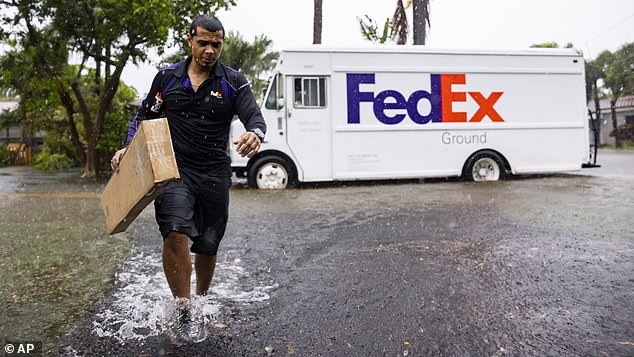
Parts of the Sunshine State were drenched in up to ten inches of rain on Tuesday, as more than a month’s worth of rain fell in a single night.
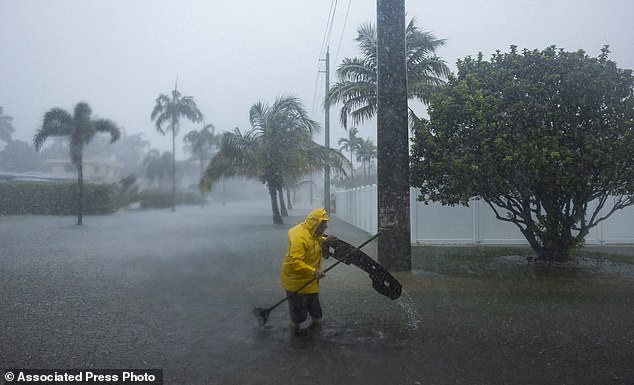
A man works to clear debris from a flooded street as heavy rain falls over parts of South Florida on Wednesday, June 12, 2024, in Hollywood, Florida.
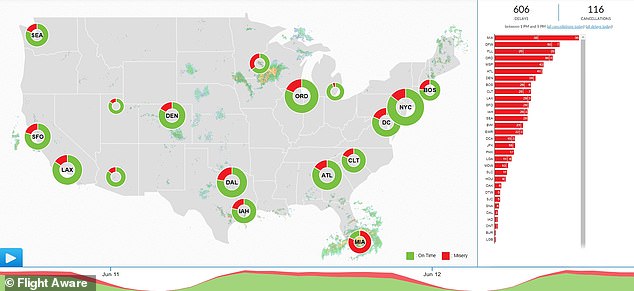
Flights were also affected, with more than 120 trips canceled or delayed due to record rain between midday Tuesday and this afternoon.
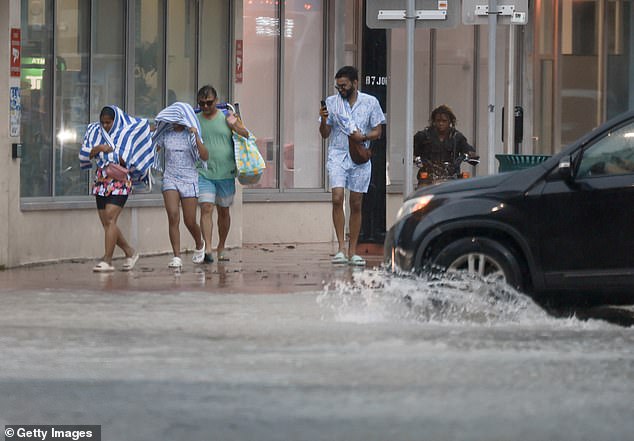
The Tampa Bay area was hit with eight inches of rain in three hours, a weather event so rare that it is only expected once every 500 to 1,000 years.
It predicts between 17 and 25 named storms in the coming months, including up to 13 hurricanes and four major hurricanes. An average season has 14 named storms.
Florida’s rainy season begins around June with the start of the six-month-long hurricane season, which this year is forecast to be among the most active in recent memory.
The disturbance had not reached cyclone status as of Tuesday and had only a small chance of forming into a tropical system once it emerges in the Atlantic Ocean after crossing Florida, according to the National Hurricane Center.
“Regardless of development, heavy rainfall is forecast to continue across portions of the Florida Peninsula over the next several days,” the hurricane center posted on its website Wednesday.


